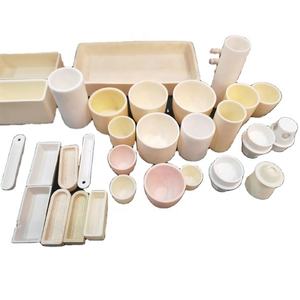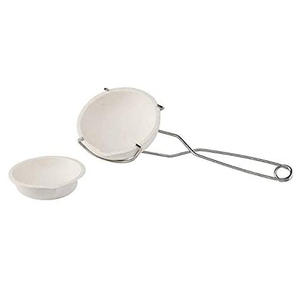Intro to Ceramic Products: Bridging Custom with Modern Product Scientific Research
Ceramic products have evolved much beyond their historic origins in ceramic and art, becoming important parts in aerospace, electronic devices, medicine, and power systems. Specified by their not natural, non-metallic composition and high-temperature processing, contemporary porcelains supply unequaled performance in severe settings. Whether as insulators in microchips, implants in human joints, or architectural products in jet engines, ceramic items today represent a fusion of old craftsmanship and advanced nanotechnology.
(Ceramic Products)
Classification and Useful Properties of Ceramics
Ceramic products can be broadly categorized right into standard (e.g., blocks, tiles, porcelain) and sophisticated (e.g., silicon nitride, zirconia, alumina) types based on make-up and application. Conventional porcelains are valued for their affordable, resilience, and visual charm, while advanced ceramics excel in mechanical stamina, thermal resistance, and electric actions. Their one-of-a-kind combination of hardness, rust resistance, and bio-inertness makes them vital where steels and polymers fall short, specifically under high stress, temperature, or chemical exposure.
Production Processes and Technological Advancements
The manufacturing of ceramic items includes powder synthesis, shaping, sintering, and finishing– each action vital to attaining wanted homes. Technologies such as trigger plasma sintering, additive production, and colloidal processing have actually significantly improved dimensional precision, microstructural control, and practical assimilation. These innovations enable intricate geometries and multi-functional layouts that were previously impossible with conventional approaches like slip spreading or dry pressing. Such progression has actually broadened the extent of ceramic applications across markets.
Function in Electronics and Semiconductor Industries
In the electronics field, ceramic products serve as substratums, capacitors, sensing units, and insulating parts as a result of their excellent dielectric buildings and thermal stability. Multilayer ceramic capacitors (MLCCs), as an example, are discovered in nearly every digital device, from smart devices to electrical vehicles. Alumina and light weight aluminum nitride substratums are extensively made use of in power modules and LED warm sinks, making certain reliable thermal administration and long-lasting integrity in high-performance systems.
Medical Applications: Bioceramics and Implantable Tools
Bioceramics represent among the fastest-growing sections in the ceramic product market. Materials like hydroxyapatite, alumina, and zirconia are utilized in dental implants, bone replacements, and joint prostheses as a result of their biocompatibility and put on resistance. Unlike metal implants, ceramic-based devices minimize ion leaching and minimize allergies, making them suitable for lasting implantation. Recent growths in porous scaffolds and bioactive glass-ceramics better improve cells assimilation and regenerative capabilities in medical therapies.
Aerospace and Protection: Ceramics in Extreme Conditions
Ceramic items play a vital duty in aerospace and defense systems where products have to hold up against severe temperatures, pressure, and influence. Parts such as turbine blades, missile nose cones, and thermal defense tiles count on porcelains like silicon carbide and zirconium dioxide to preserve structural honesty under hypersonic speeds and re-entry problems. Their lightweight nature integrated with high compressive toughness also makes them eye-catching for armor plating and ballistic securing in army applications.
Environmental and Power Technologies Using Ceramics
( Ceramic Products)
From gas cells to nuclear waste encapsulation, ceramic products are central to sustainable energy and environmental removal technologies. Solid oxide gas cells (SOFCs), for instance, depend on yttria-stabilized zirconia electrolytes to make it possible for efficient energy conversion at heats. In nuclear design, porcelains like SYNROC (synthetic rock) are created to immobilize radioactive isotopes in steady crystalline matrices. In addition, catalytic ceramic membranes are being released in water filtration and industrial discharge control, adding to worldwide sustainability initiatives.
Market Trends and Worldwide Need Drivers
The international ceramic items market is experiencing durable development, fueled by need from electronic devices, health care, automotive, and renewable resource markets. Asia-Pacific stays the biggest manufacturer and customer, driven by China’s production prominence and Japan’s management in sophisticated ceramics. The United States And Canada and Europe adhere to closely, supported by R&D investments in smart ceramics and green innovation initiatives. As automation and digital style devices become a lot more incorporated right into ceramic manufacturing, production efficiency and personalization abilities remain to increase.
Challenges and Future Instructions in Ceramic Item Growth
Regardless of their advantages, ceramic items deal with obstacles consisting of brittleness, restricted ductility, and high processing prices. Ongoing research concentrates on improving sturdiness with nanostructuring, composite reinforcement, and self-healing systems. Recycling and end-of-life recovery also remain locations for enhancement, specifically in high-value but difficult-to-reprocess components. Looking forward, the convergence of AI-guided product layout, 3D printing, and smart noticing will redefine exactly how ceramic products are engineered, generated, and applied across future industries.
Vendor
Advanced Ceramics founded on October 17, 2012, is a high-tech enterprise committed to the research and development, production, processing, sales and technical services of ceramic relative materials and products. Our products includes but not limited to Boron Carbide Ceramic Products, Boron Nitride Ceramic Products, Silicon Carbide Ceramic Products, Silicon Nitride Ceramic Products, Zirconium Dioxide Ceramic Products, etc. If you are interested, please feel free to contact us.(nanotrun@yahoo.com)
Tags:
All articles and pictures are from the Internet. If there are any copyright issues, please contact us in time to delete.
Inquiry us

